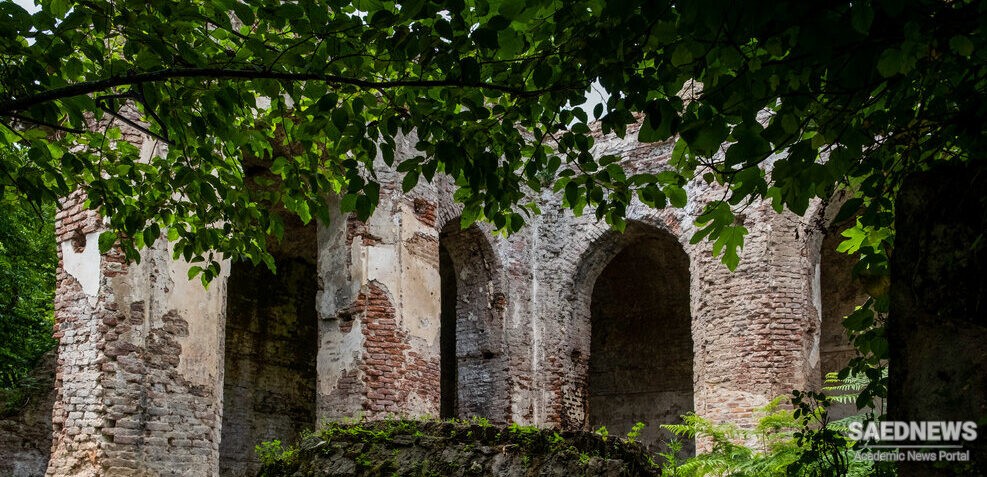This ancient Iran’s temple is placed in the northwest of Gilan plain, 80 kilometers west of Rasht, 22 kilometers south of Talesh, in Dinachal rural district in Rezvanshahr, along the right coast of Dinachal river, in Kisheh Khaleh village, in the middle of Dr. Rastegar Jungle Park.
This white building that had been one of the fire temples of Iran, was inscribed on the index of Iran National Heritages in 1379 SH. The late Manuchehr Sotudeh mentioned to Espi Mazget, in one of his books, as one of the Seven Wonders of Gilan.

The structure has a central porch with two side corridors. The width of corridors is three meter and a half and its height from the ground level is six meters. The base of porch is octagonal in the lower parts and in the middle and it is curved in the upper parts of the vault. The construction material is mostly stone, red brick, pottery and lime mortar. The walls are 175 centimeters of height that are covered with stone to one meter above the ground. The square red brick with 23 centimeters in six centimeters has been applied in the upper parts of the walls and columns. All of these has been jointed with lime mortar.
There are two columned porches with semi-curved entrance gate in the north and west sides of Espi Mazget. The walls of these porches are curved. The inclined ceiling is the combination of a barrel vault and a fire temple . The lime mortar has been used for covering brick walls that had Kufic inscriptions and floral motifs and the traces of middle ages’ plastering still remains. The construction date existing on the wall indicates the fifth century AH and the discovered potteries are related to the eighth century, Ilkhanid period.
Rooting jungle trees into the walls, Dinachal river’s flood, manipulation and wall-writings by some humans have damaged this ancient Persian monument.


 Behrouz Boroumand the Pioneer of Kidney Transplant in Middle East
Behrouz Boroumand the Pioneer of Kidney Transplant in Middle East














































